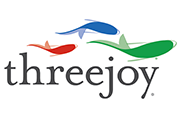 There are many challenges in navigating the transformation of education in the 21st century. Key among these is the movement from an educational culture of expertise in which disciplinary lecturers impart their knowledge to obedient students who listen, to a more collaborative community of learners in which broadly aware and educated coaches trust and unleash self-motivated learners in service to the learners’ educations and lives. This would be challenging enough, but in making such major shifts in educational culture, the organizational cultural challenges of university life are themselves remarkably daunting.
There are many challenges in navigating the transformation of education in the 21st century. Key among these is the movement from an educational culture of expertise in which disciplinary lecturers impart their knowledge to obedient students who listen, to a more collaborative community of learners in which broadly aware and educated coaches trust and unleash self-motivated learners in service to the learners’ educations and lives. This would be challenging enough, but in making such major shifts in educational culture, the organizational cultural challenges of university life are themselves remarkably daunting.
The Gods of Management
One of my favorite organizational books is Charles Handy’s 1978 text Gods of Management
(nice summary here). In it he talks about the importance of culture in understanding organizations, and to make his point, he calls out four cultures:
- Club or Zeus
- Project (Problem solving) or Athena
- Bureaucratic or Apollo
- Existential (Star) or Dionysus
In a club culture, a single figure, the Zeus, often the founder, has great knowledge and knowhow about how to get things done. VC firms and private equity firms are often organized around Zeus. Members of the organization have one question to answer in making decisions about their own contact: “What would Zeus do?” Zeus cultures are effective in fast-moving environments where good-enough decisions must be made quickly and well.
The culture of Athena is a project or problem-solving culture. Teams of experts work together to find and solve problems. Engineering firms and other consultancies worship at the altar of Athena. They are fairly costly, but they are effective at tackling a discreet challenge.
The culture of Apollo is a culture that excels at doing routine tasks. A culture of rules and procedures, it can seem impersonal at times, but it will help yesterday happen today and tomorrow and the next day fairly reliably.
The culture of Dionysus is the star or existential culture. In Hollywood and hospitals, for example, movie stars and doctors are treated as the central and valuable figure they are. They aren’t particularly coherent cultures, and they tend to spend a fair amount of effort assuaging the egos of the stars; they do, however, effectively utilize the stars in the special roles they play.
What Gods Universities?
When we look at this typology, and think about universities, it’s a fairly interesting exercise to reflect about the Handian culture of universities. Apollo comes to mind immediately. Anyone who has worked 15 minutes in a university is struck by the rules and regulations, governance, & concern with process to the point, sometimes, that it is hard to understand how much education or research gets done.
But another few minutes of reflection and we realize that the culture is far from pure. Universities, are concerned with hiring and assuaging star research professors, and our minds drift to Dionysus and the star culture.
This is an interesting hybrid (hospitals are also this hybrid), and many of leadership breakdowns of universities can be understood as the culture clash between Dionysus and Apollo.
Stars vs. Rules -> Status Amplification
There are many ways in which this culture class can express itself, but here let’s focus on just one. The rule following part of the culture is relatively insensitive to status, and goes about its business, enforcing its rules and procedures, but the dynamic thereafter is interesting. Stars perturbed by some impersonal enforcement of the rules believe they are exceptional and demand special treatment, usually from the department head. And herein is the interesting part.
A main function of a department head is to determine which of these demands should be accommodated and which can safely be ignored. Nowhere does it say in department head training that this is the case, but much of the limited discretion a department head has is in this domain (and in hiring the stars). The functional result is that certain faculty members receive special treatment outside what the bureaucracy routinely offers. The end result is a heightened status hierarchy with a greater sense of privilege and entitlement for those chosen to receive the special treatment, and a greater sense of resentment among those who do not. And given that the backdrop for those who don’t receive special treatment is impersonal treatment by a callous bureaucracy, the contrast can be stark.
Implications for Administrators & Change
Simply having a model of the culture class may be helpful to effective administration of the institution. In what ways can the bureaucracy be better trained to understand the importance of all the stars? In what ways can rules be modified to promote smoother operation and respect for the stars? In what ways can the bureaucracy undergo continual improvement to be more efficient and effective in support of the larger culture? In what ways can the worst effects of the status gradient be ameliorated.
Moreover, the post started by talking about change, and in trying to mount an educational initiative, a third god pops into the picture: Athena. All initiatives are projects and to move from Apollo+Dionysus to Athena requires special care. This issue will be taken up in a subsequent post.



